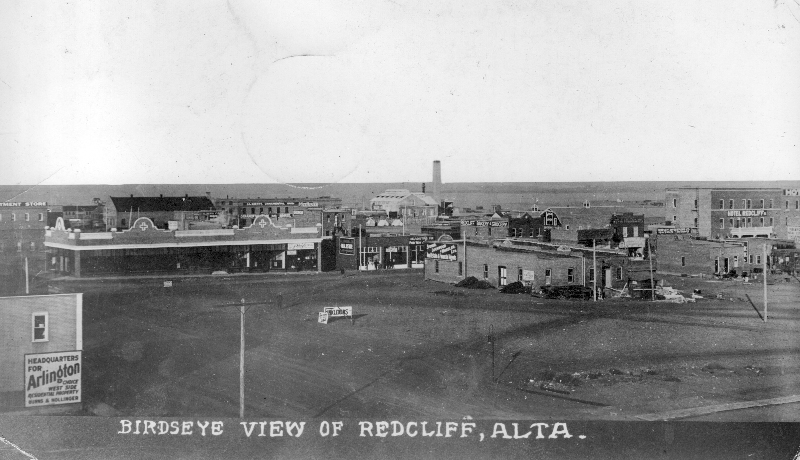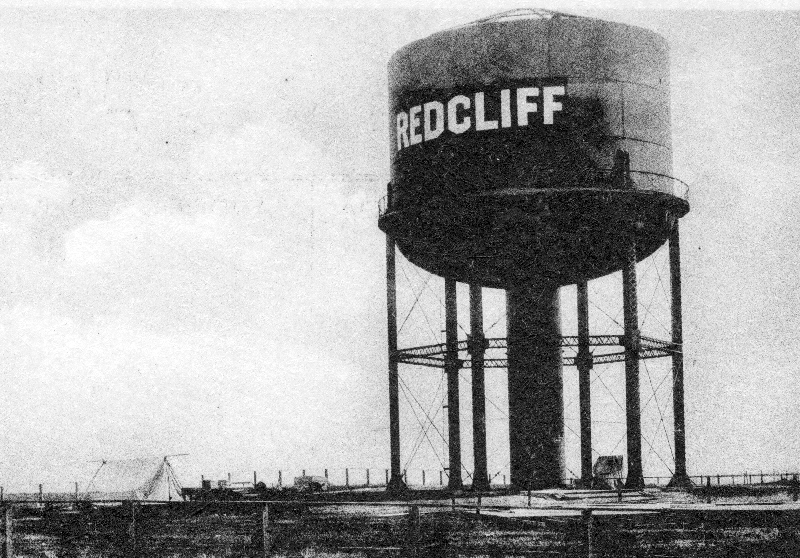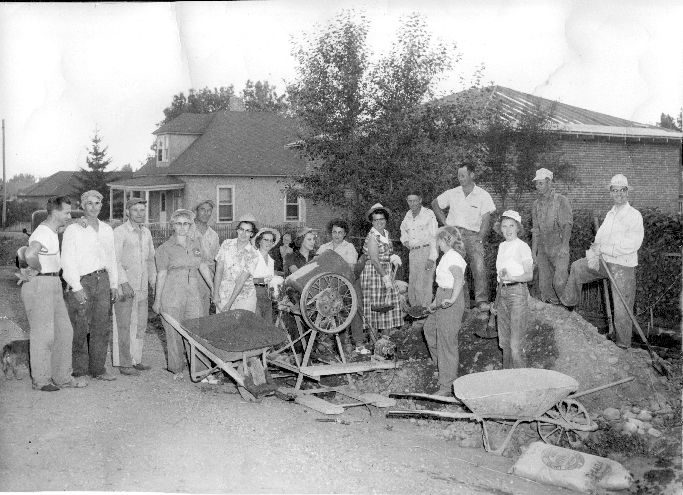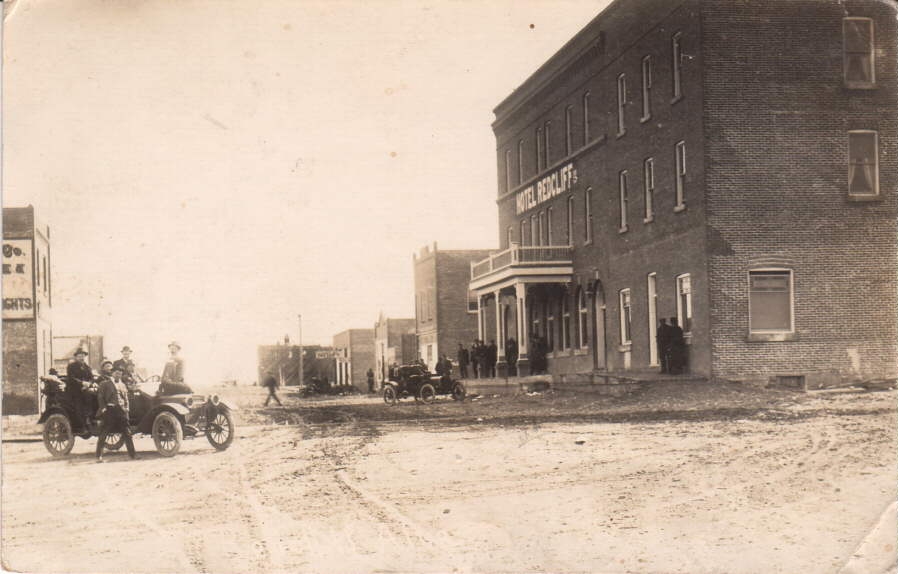Redcliff’s rich history began in the 1880s with the discovery of abundant coal and natural gas reserves. Easy access to this inexpensive resource led to Redcliff being promoted as the “Smokeless Pittsburgh of the West”. This drew industries that produced such diverse products as shoes, gloves, cigars, trucks, bricks, glass, flour and more. A cyclone that ravaged several of these businesses started the decline, and the war and a flu epidemic ended the prosperity. Following World War II, the community again experienced steady growth. Redcliff remains progressive and currently boasts a population of over 5,500.
The Town of Redcliff is known as “The Greenhouse Capital of the Prairies”

This is because long hours of sunlight, inexpensive natural gas, and proximity to the TransCanada Highway all contributed to the establishment and success of the largest concentrations of commercial greenhouses in Western Canada. There are over 75 acres under glass or plastic. Cucumbers, tomatoes, and peppers are grown in abundance.

Although there has been an established industry here since the early 1880s, it wasn’t until 1906 that the area became populated by people from afar. In 1883 a man by the name of Bayliss established a coal mine just to the west of the present town. At about the same time one of the Stair Ranches was established in the immediate area. Both concerns lasted only a few years. Finding it too costly to pack up and leave, the Bayliss interests disposed of the mining equipment by shoving it down the mine shaft, later to catch fire and smoulder for many years.
Up until the early 1970s, the smoke from the mine could be seen to the west of town where the mine office and buildings were located.
This coal pile was visible up until the late 1970s until erosion from wind and rain reduced it to a patch of black coal dust. The only visible sign of anything being in operation there is a few rocks that show where the mine office was located and the disturbance of the coulees where the rail line went to the mine entrance.
To the north of the Bayliss mine on the north side of the CPR mainline, the Stair Ranch was located. During those years, the Ranch raised horses and grew cereal crops. In the dry years, the crops were watered by wagons which were filled at the river and pulled through the coulees up to the grain fields. All of the ranch buildings were sold to some of the employees who moved them to locations where they had purchased land to begin a new life. The Dixons, the Walkers, and the Ellises were a few of those pioneers. The only visible evidence of the ranch operation is a hole in the ground in the grain field on the right side of the Trans Canada Highway.
It was in 1906 that a second coal mine was begun in Redcliff along with a brick factory. This was the Redcliff Brick & Coal Company. It was situated on the south side of the town and supplied the whole of the southern part of the province with coal and clay bricks. The coal mine operated until the early 1950s and the brick factory was in operation until the early 1960s.
It was here that Rudyard Kipling made his famous statement about the community having “all hell for a basement” and being “the town that was born lucky”.
The old-timers in town still maintain that Kipling was referring to Redcliff and not Medicine Hat when he made these statements. The Brick and Coal Company welcomed him when he visited there by igniting one of its gas wells that were situated at about 2nd street and 10th avenue southwest.

Three gentlemen by the names of Stoner, Lockwood, and Wheeler were the next to make an impression on the district. They were entrepreneurs who formed a real estate company under their names and made their office in the building that now occupies the south building of the Redcliff Museum. These men were very ambitious and had many contacts in Minnesota where many industries were located. They made a very good job of promoting the town and eventually they had persuaded their friends to relocate in Redcliff. Some of those industries that moved to Redcliff were: Redcliff Commercial Cars makers of buses and trucks, Munderloh Glass Works that made plate glass, Redcliff Shoe Company making boots & shoes for the war effort, Redcliff Hat & Glove Company, The Redcliff Brewery, The Redcliff Rolling Mill & Bolt Company which made cast iron that was sent to the Redcliff ornamental Iron & Brass Company who made lamp standards, fire hydrants, and the fence around Parkside school. In addition to the Americans, there were Canadians who felt that there was a future in Redcliff. Some of these industries were: The Redcliff Cigar Company, The Hammond Stooker Company, The Diamond Flint Glass Company makers of glass containers and lantern globes, The Redcliff Rosery, The Knechtel Furniture Company, The Dauntless Manufacturing Company, The Alberta Clay Products, and the Redcliff Pressed Brick Company.

Unfortunately, most of these industries thrived only for a few years. There were many setbacks that contributed to their closures.
The most devastating was the tornado of 1915 that came in from the southwest and damaged most of the homes and industries.
There was also a shortage of male employees during World War 1 and some of the industries closed down as it was not the practice at that time to employ female labourers. After the War, many of the soldiers did not return and the Spanish flu pandemic contributed to the death of many residents and a depression also existed. It was a time when money was scarce and there was not a demand for the products that were manufactured in Redcliff. One by one the industries closed and the people moved away.
Today most of the original industrial sites are no more, being replaced by parks and residential subdivisions. It is the wish of the Redcliff Museum to identify these sites as it was the industrial invasion of the early 1900s that made Redcliff what it is today. With this in mind, the Museum has placed rock monuments near where these industries were situated, enabling those visiting Redcliff to realize what an industrial, thriving community Redcliff was in the early years of the last century which helped shape its future.
